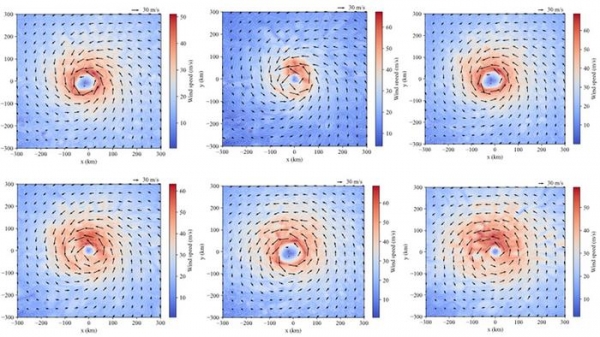Algorithm reconstructs wind fields quickly, accurately, and with less observational data.
Hurricanes, or tropical cyclones, can be devastating natural disasters, leveling entire cities and claiming hundreds or thousands of lives. A key aspect of their destructive potential is their unpredictability. Hurricanes are complex weather phenomena, and how strong one will be or where it will make landfall is difficult to estimate.
In a paper published this week in Physics of Fluids, by AIP Publishing, a pair of researchers from the City University of Hong Kong employed machine learning to more accurately model the boundary layer wind field of tropical cyclones.
In atmospheric science, the boundary layer of the atmosphere is the region closest to the Earth’s surface.
Read more at American Institute of Physics
Image: Wind fields modeled by the authors’ physics-informed neural network (PINN) produces similar results to a Weather Research & Forecasting (WRF) simulation while using far fewer resources. (Credit: Feng Hu and Qiusheng Li)
Sci/Tech Energy Climate Top Stories
